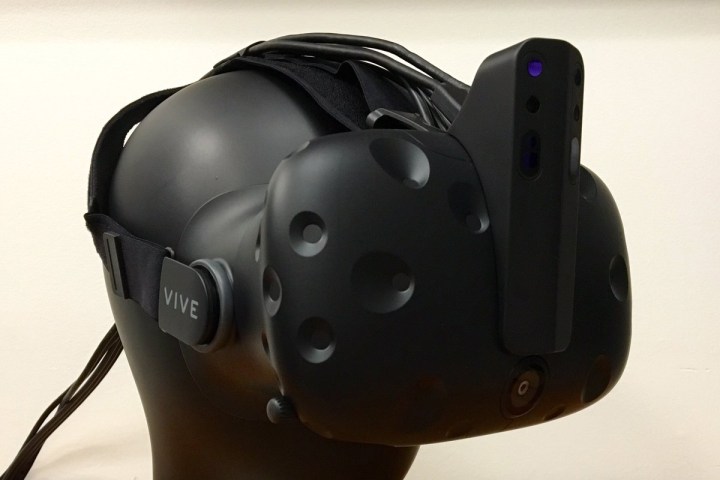
Dimitri Diakopoulos, a product scientist and prototyping engineer at Intel’s Perceptual Computing Lab, tweeted a picture of his creation yesterday. It’s a peripheral that sticks out of the front face of the virtual reality headset, somewhat like a unicorn’s horn. The peripheral, which will be revealed at Intel’s Developer Forum in two weeks, includes six cameras for accurately sensing hand motions and obstacles.
Why build such a thing?
“I felt that VR needed a solid unicorn peripheral with 6 additional cameras,” Diakopoulos tweeted.
https://twitter.com/ddiakopoulos/status/760683354828091392
There aren’t many details at this point, other than what Diakopoulos has tweeted. We don’t even know what the peripheral will weigh overall, though Diakopoulos says each of the six cameras weighs around 10 grams, and that the unicorn design was necessary to maintain balance.
Those cameras add all sorts of possibilities for VR design, though. They could track hand movements, allowing users to interactive with VR without a controller. They could also constantly scan the environment, making it possible for the headset to detect and warn you when you’re about to bump into something.
The new accessory also might make it possible to quickly switch to a view of the real world, without taking off the headset. If you’ve put on a VR headset before, you know it can be tricky to get a quick drink of water.
Diakopoulos, for his part, thinks sensors like these will become commonplace on headsets. “I predict it’ll be rare to buy any HMD (head mounted display) in 2018 without additional vision sensors integrated,” he separately tweeted.
Virtual reality, it seems, will be a big part of the 2016 Intel Developer Forum, which takes place from August 15 to 18 in San Francisco. According to the Intel website, ” top executives from Intel and the technology industry will share their vision of the future in key growth areas, including virtual reality, autonomous driving, machine learning, and 5G.”


